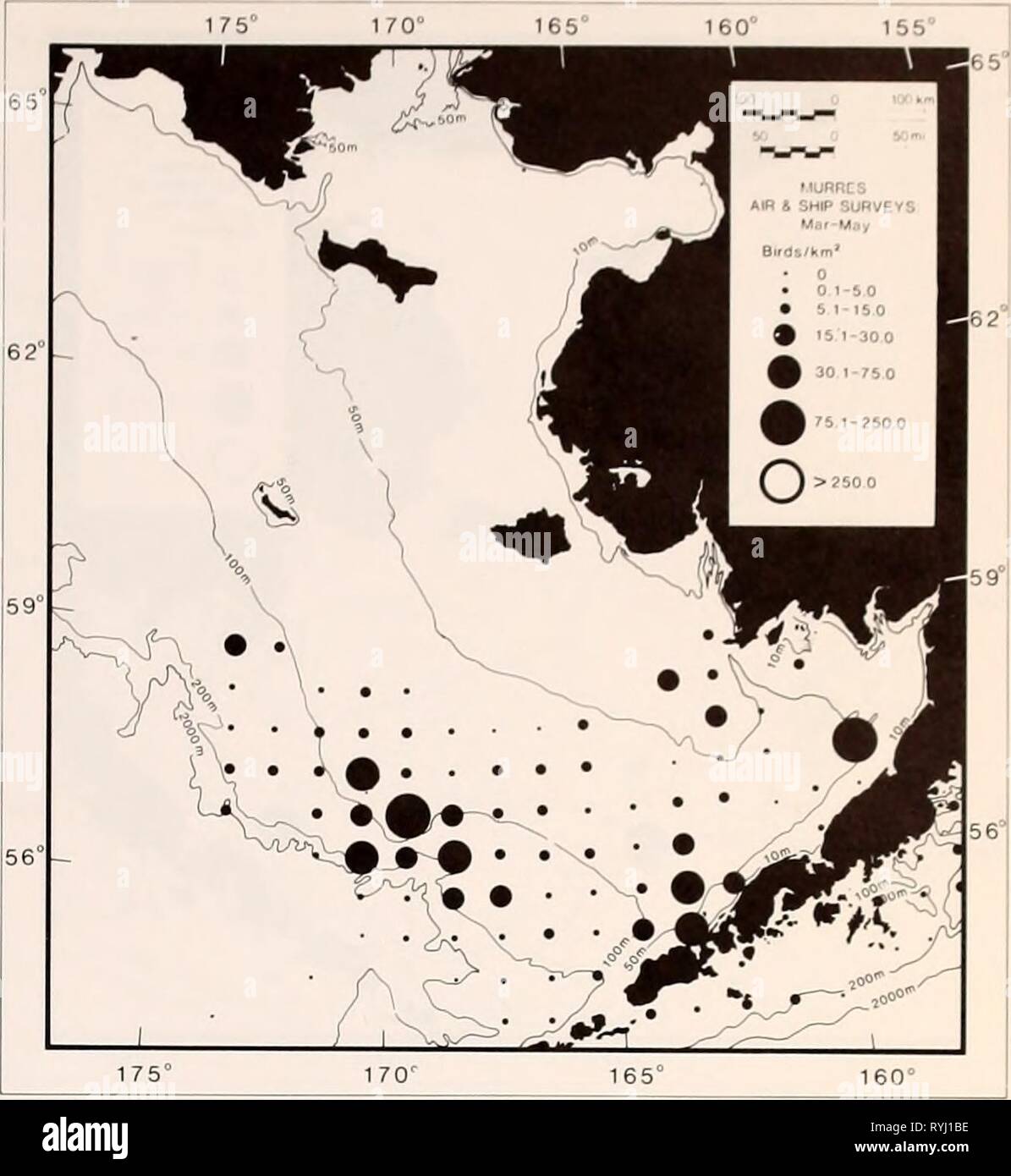The Eastern Bering Sea Shelf : oceanography and resources / edited by Donald W. Hood and John A. Calder easternberingsea00hood Year: 1981 Pelagic clislrihution 705 offshore. This notion is consistent with Swartz's (1966) findings on food habits. Since Common and Thick-billed Murres are diffi- cult to tell apart in the field, particularly from air- craft, the data for the two species have been com- bined in this chapter. Likewise, aerial and shipboard surveys are combined to provide the most compre- hensive distributional patterns. Both survey types tend to underestimate murre densities, and

Image details
Contributor:
Bookend / Alamy Stock PhotoImage ID:
RYJ1BEFile size:
5.7 MB (164.7 KB Compressed download)Releases:
Model - no | Property - noDo I need a release?Dimensions:
1356 x 1475 px | 23 x 25 cm | 9 x 9.8 inches | 150dpiMore information:
This image is a public domain image, which means either that copyright has expired in the image or the copyright holder has waived their copyright. Alamy charges you a fee for access to the high resolution copy of the image.
This image could have imperfections as it’s either historical or reportage.
The Eastern Bering Sea Shelf : oceanography and resources / edited by Donald W. Hood and John A. Calder easternberingsea00hood Year: 1981 Pelagic clislrihution 705 offshore. This notion is consistent with Swartz's (1966) findings on food habits. Since Common and Thick-billed Murres are diffi- cult to tell apart in the field, particularly from air- craft, the data for the two species have been com- bined in this chapter. Likewise, aerial and shipboard surveys are combined to provide the most compre- hensive distributional patterns. Both survey types tend to underestimate murre densities, and aircraft surveys seem especially prone to miss single birds and small flocks. Murres showed considerable seasonal variation in distribution (Figs. 40-27 to 40-30). In springtime they were found throughout the continental shelf waters, with moderate densities along the 100-m to 200-m curves from Unimak Pass to the Pribilof Is- lands. Highest densities were found near the 50-m isobath (inner front) just north of the Alaska Pen- insula at about 163-164°W. Even though it was a considerable time before the beginning of egg-laying, elevated numbers were found near the Pribilof Is- lands and the Walrus Islands. The northern extent of the pelagic distribution at this season was determined by the pack ice. In summer, most murres were found in the vicinity of the major colonies, near the Pribilofs, Cape Newen- ham, Nunivak Island, St. Matthew Island, and St. Lawrence Island. Elsewhere, moderate densities were Figure 40-27. Pelagic distribution of murres—air and ship surveys: March-May.